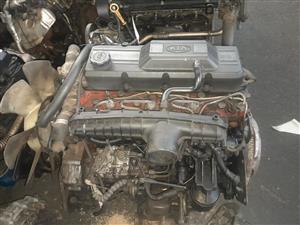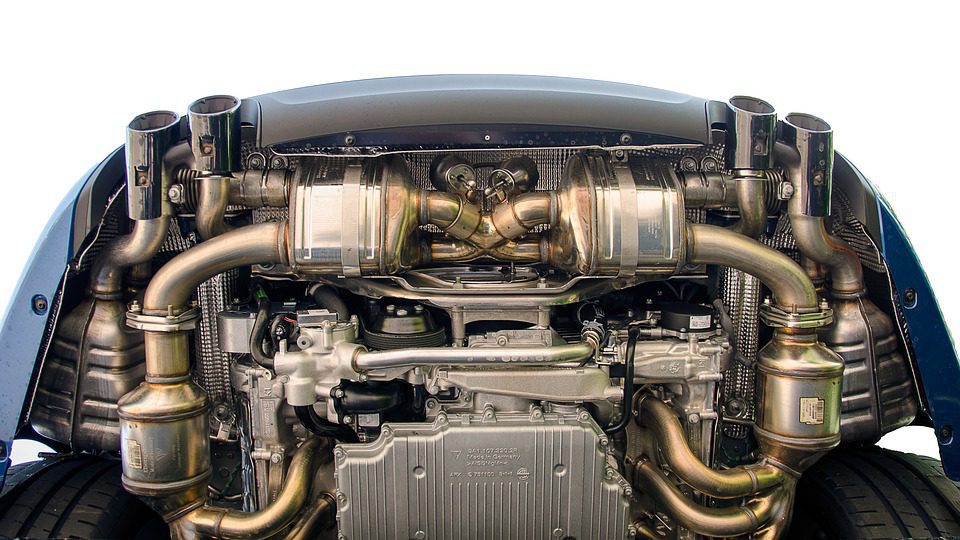Discovering the most recent Technological Developments in Import Engines and How They Enhance Driving Experience
In the realm of auto engineering, the landscape of import engines is undertaking an extensive makeover driven by innovative technological developments. From the advancement of turbocharged engines to the assimilation of crossbreed innovation, the most recent innovations are revolutionizing the driving experience in ways formerly inconceivable. As import manufacturers press the limits of performance and effectiveness with improved gas injection systems and innovative engine administration remedies, the inquiry occurs: Just how do these advancements genuinely impact the method we connect with our vehicles when traveling?

Development of Turbocharged Engines
In the vehicle industry, the advancement of turbocharged engines has substantially transformed the landscape of efficiency and efficiency. Turbocharging, as soon as largely seen in high-performance sporting activities automobiles, has now become a mainstream technology taken on by a large range of lorries, from compact hatchbacks to deluxe sedans. The basic principle behind a turbocharged engine is basic yet reliable - forcibly even more air into the combustion chamber, it permits even more gas to be burned, leading to raised power result.
One of the crucial benefits of turbocharged engines is their ability to deliver even more power from smaller, extra fuel-efficient engines. This downsizing fad has brought about a decrease in emissions without jeopardizing performance, making turbocharging an appealing option for car manufacturers striving to fulfill rigid ecological policies. Moreover, turbocharged engines use enhanced torque at lower RPMs, providing motorists with an extra responsive and dynamic driving experience - import engines.
As innovation remains to breakthrough, we can anticipate additional developments in turbocharging, bring about even greater degrees of efficiency and efficiency in the automotive sector.
Innovations in Gas Shot Solutions
With the continual development of vehicle technology, significant improvements have actually been made in fuel injection systems. Modern fuel shot systems have actually progressed to deliver fuel a lot more efficiently and precisely into the engine cyndrical tubes, boosting overall engine performance and gas performance. Among the crucial innovations in fuel shot systems is the change from standard port fuel injection (PFI) to advanced direct gas shot (DFI) technology. DFI systems inject gas straight into the burning chamber at high stress, resulting in far better fuel atomization and combustion, causing boosted power outcome and decreased emissions.
Moreover, the combination of electronic control units (ECUs) and sensors in fuel shot systems has actually allowed for real-time modifications to sustain shipment based on numerous elements such as engine lots, temperature level, and driving problems. In addition, developments in gas injector design, materials, and spray patterns have added to cleaner burning and smoother engine procedure.
Assimilation of Hybrid Innovation
The advancement of fuel injection systems towards better performance and performance has set the phase for the seamless integration of hybrid innovation into contemporary engines. Hybrid modern technology integrates using standard inner combustion engines with electric propulsion systems, supplying boosted fuel efficiency and lowered exhausts. By incorporating electrical motors and batteries right into the powertrain, hybrid engines can supplement the internal combustion engine during acceleration or low-speed driving, thus boosting general efficiency.

Enhanced Engine Management Systems
What are the key advancements in engine monitoring systems that are enhancing the performance and efficiency of contemporary engines? Engine management systems have gone through considerable improvements to optimize engine efficiency and performance.
Furthermore, modern-day engine management systems make use of advanced algorithms and man-made knowledge to examine the data collected by sensing units and make vibrant modifications to aspects such as ignition timing, fuel injection, and turbocharger increase stress. This degree of accuracy and versatility results in boosted engine responsiveness, increased power result, and reduced gas consumption.
Furthermore, engine monitoring systems now feature innovative analysis abilities that can discover and deal with issues such as misfires, sensing unit malfunctions, and fuel system irregularities in real-time, thereby improving overall engine dependability and longevity. These advancements in engine management systems play a crucial role in enhancing the driving experience by providing ideal efficiency, fuel performance, and reliability.
Effect of Lightweight Materials
Incorporating lightweight products in official source engine production has actually transformed the vehicle sector's method to enhancing gas efficiency and performance. Making use of products such as carbon fiber, light weight aluminum, and titanium has actually substantially reduced the general weight of engines, causing enhanced power-to-weight ratios and raised gas economy. These light-weight products provide a higher strength-to-weight ratio contrasted to standard products like steel, enabling greater toughness Visit Website without endangering performance.
Among the key benefits of making use of lightweight products in engine building and construction is the reduction of inertia, resulting in quicker engine response times and boosted overall car agility. Furthermore, the lighter weight contributes to lower power intake, making lorries a lot more ecologically friendly by lowering exhausts.
In addition, the execution of light-weight materials in engine components such as pistons, attaching rods, and crankshafts has actually allowed engineers to push the borders of performance without giving up dependability (import engines). This advancement has led the way for a lot more effective and effective engines that deliver an exceptional driving experience while satisfying rigorous discharges standards
Verdict
Finally, the current technical technologies in import engines have actually dramatically enhanced the driving experience. From the evolution of turbocharged engines to developments in fuel shot systems, assimilation of hybrid modern technology, improved engine administration systems, and using light-weight products, these developments have jointly improved performance, gas efficiency, and overall driving dynamics. As innovation continues to breakthrough, we can expect a lot more exciting developments in the future of import engines.
Modern fuel shot systems have actually progressed to supply gas more successfully and exactly into the engine cyndrical tubes, enhancing total engine efficiency and gas performance - import engines. By integrating electrical motors and batteries right into the powertrain, hybrid engines can supplement the inner combustion engine during velocity or low-speed driving, thereby improving general efficiency
What are the key innovations in engine monitoring systems that are improving the efficiency and performance of contemporary engines? Engine monitoring visit here systems have undergone substantial developments to maximize engine performance and effectiveness. From the development of turbocharged engines to innovations in fuel shot systems, assimilation of hybrid technology, boosted engine management systems, and the use of lightweight products, these technologies have jointly enhanced performance, fuel effectiveness, and general driving dynamics.